The new Hoka Skyward X is a super trainer — and maybe the brand’s best shoe yet
Content is created by CNN Underscored’s team of editors who work independently from the CNN newsroom. When you buy through links on our site, CNN and its syndication partners may earn a commission. Learn more
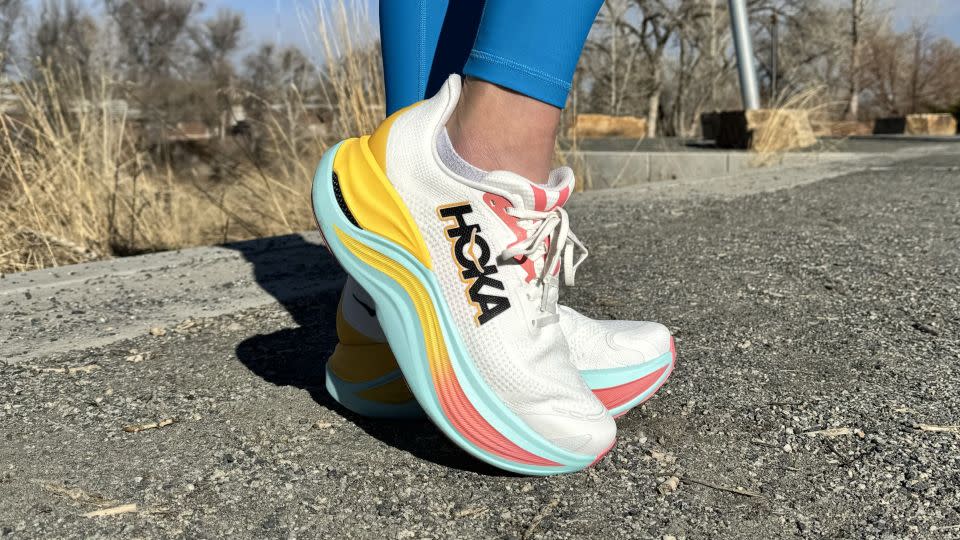
It used to be that Hoka’s chunky running shoes were outliers. Now nearly every shoe brand has at least one option with a hefty slab of foam underfoot. As maximally cushioned shoes become more of the norm, a new category is emerging: super trainers.
Super trainers bring race-day tech — light, bouncy foams and carbon plates — into more durable and versatile daily running shoes. As a result, they’re almost always maximally cushioned.
Hoka’s brand-new Skyward X trainers are a perfect example of this kind of shoe. They are like the Bondi — one of the brand’s longtime bestsellers — on steroids, with the same beefy shape and carbon plates sandwiched between more-advanced foams.
It’s a lot of shoe, and I was a little skeptical when I first took the Skyward X out of their box. But I put them to the test over a number of runs (including a nearly three-hour long run with a workout added in), and they might actually be my favorite Hoka shoes yet. Here’s why.
Hoka Women’s Skyward X
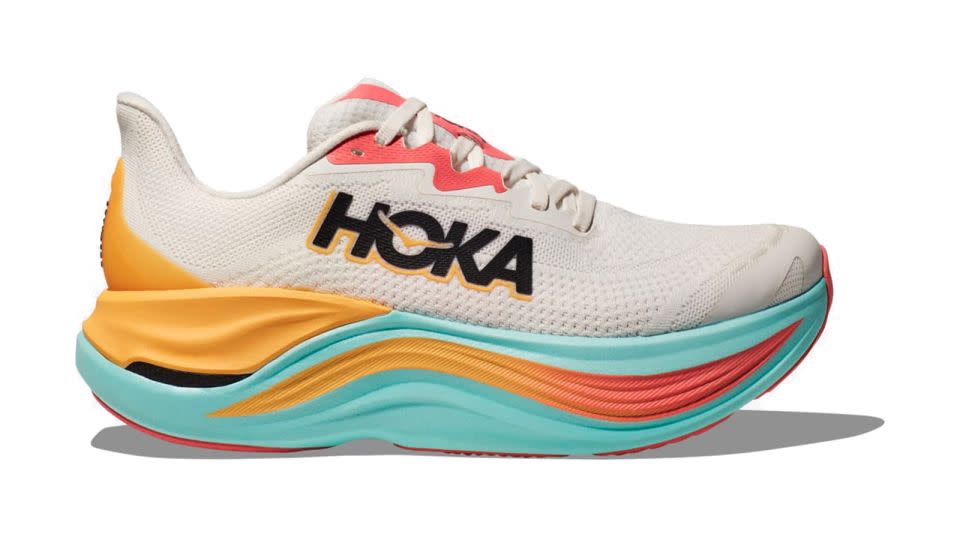
Hoka’s new super trainers use race-day technology — including carbon plates and advanced foam technology — to create a light, stable everyday running option that can go the distance.
Hoka Men’s Skyward X
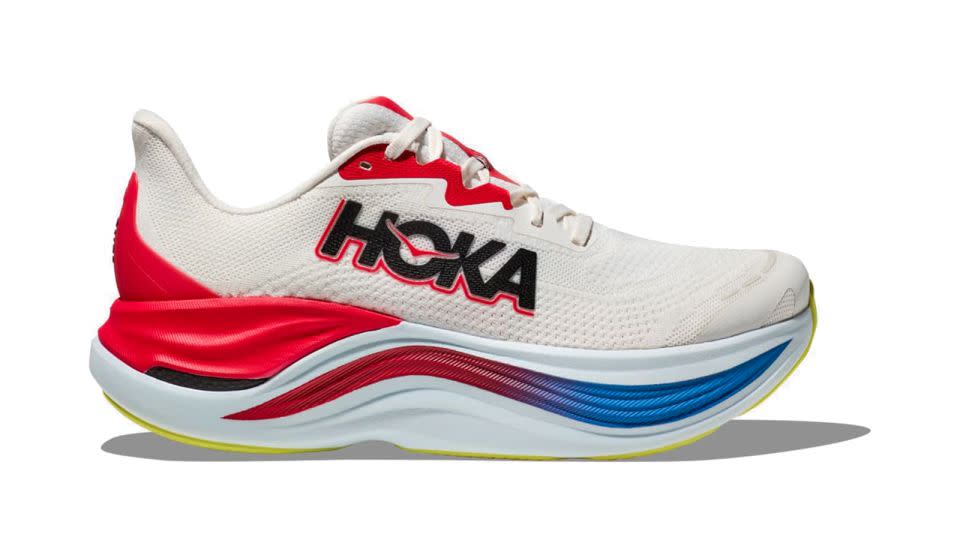
Like a beefed-up version of the bestselling Bondi sneakers, the Skyward X trainers might be my favorite Hoka runners released to date.
What I liked about them
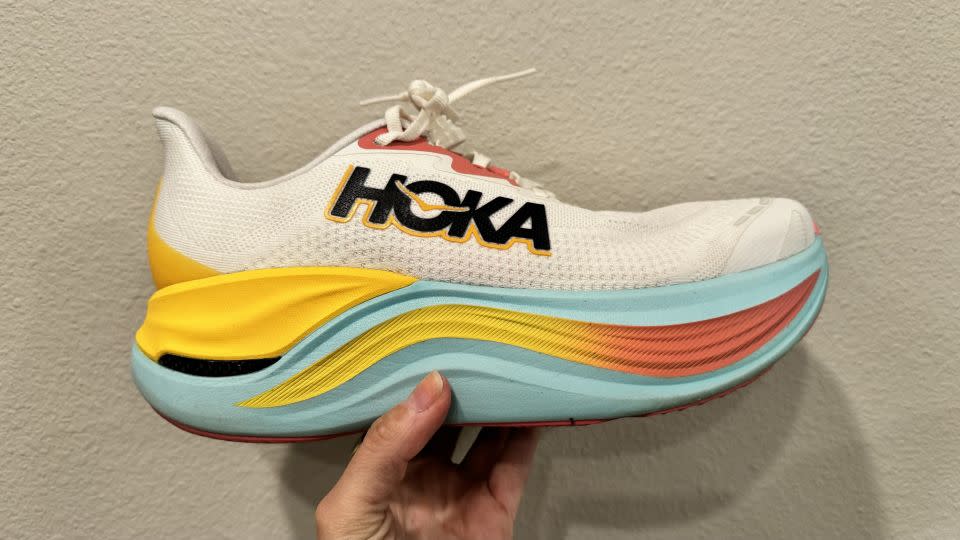
They’re surprisingly light for their size
As far as running shoes go, these are not actually lightweight. With racing shoes like the Adidas Adizero Adios Pro Evo 1, Nike Vaporfly 3 and Asics Metaspeed Sky Paris coming in at under 7 ounces, the Skyward X fall on the heavier end of the spectrum. But considering just how chunky these look (one friend likened them to clown shoes when I wore them at the gym), I was totally surprised by how light they felt when I first took them out the box. A woman’s size 8 is 9.2 ounces and a men’s size 10 is 11.3 ounces. I wear a women’s size 10, and that light sensation was just as apparent in my first hour-long run as it was in my hands.
The chunky midsoles are made up of two lightweight foams: PEBA and supercritical EVA. PEBA foam is known for its energy return and responsiveness, while EVA is denser — although the term “supercritical” means gas was pumped into the foam during the manufacturing process, reducing weight and adding bounce. Technical details aside, these felt extremely comfortable on a nearly three-hour long run. And even in the final miles, I barely thought about my feet (the gold standard for any shoe, IMO).
The stability is top notch
One of the issues with ultra-cushioned shoes is the amount of foam between your feet and the floor. Too much foam — especially lightweight foams that act like springs or trampolines — can be hard to control, forcing your feet and ankles to work harder to keep you on top of it. The Skyward X have 46 to 48 millimeters of foam underfoot, which is a lot (anything more than 30 millimeters is generally considered maximal cushioning).
But Hoka’s been doing the maximal thing for a long time without sacrificing stability. In fact, many of the brand’s shoes have earned the American Podiatric Medical Association (APMA) Seal of Acceptance, and the Skyward X are no exception. When you look at the shoes from above, you can see how wide a platform each foot is sitting on. Then, similar to the new Cielo X1, a carbon plate helps stabilize all that foam with every step, and Hoka’s Active Foot Frame cradles each foot with higher midsole walls for more support. (The design actually makes the shoe look taller than it really is). That’s all topped off with knit uppers that have zonal support to keep your feet locked down.
What I didn’t like about them
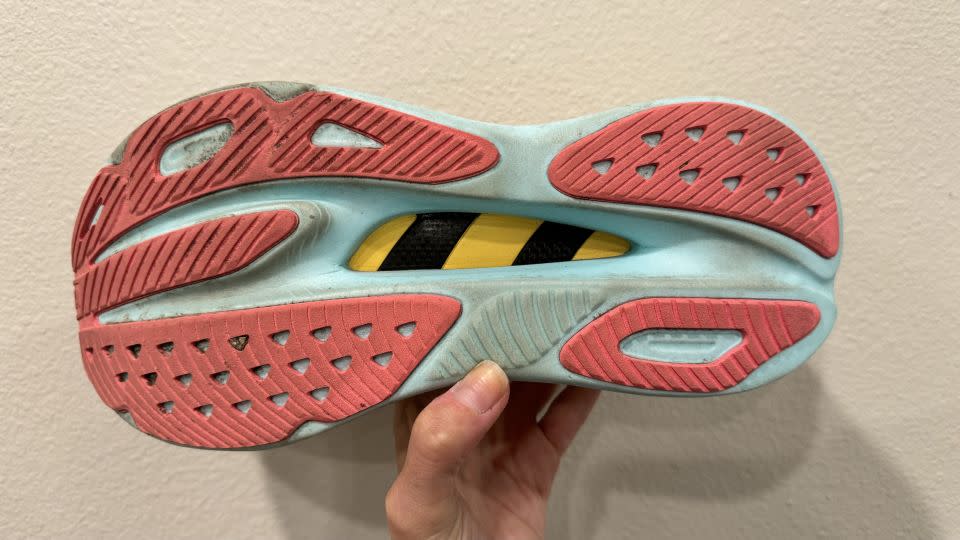
Surprise: They’re expensive
We get it: Super-shoe technology means super-shoe prices, but $225 is a lot for daily trainers. The Skyward X are more expensive than other plated training shoes, including the New Balance FuelCell SuperComp Trainer v2 and Saucony Kinvara Pro that each go for $180, as well as the Asics Superblast, a $200 pair of non-plated trainers. Of course, today’s race-day shoes generally start around $250, which is an even steeper cost. One of the benefits of super trainers is that they can also double as racing sneakers, especially for people who run slower than an eight-minute mile. Whether you’re willing to shell out for these will depend on what you’re using them for and, more importantly, how comfortable they feel.
Bottom line
Hoka has long been prioritizing comfort and stability in its running shoes, yet it’s only recently that the brand has upped its game when it comes to racing shoes. The Skyward X super trainers combine the best of both worlds. If you’re looking for shoes that won’t weigh you down, whether you’re picking up the pace or going the distance, the Skyward X are an excellent choice.
Note: The prices above reflect the retailers' listed price at the time of publication.
For more CNN news and newsletters create an account at CNN.com

